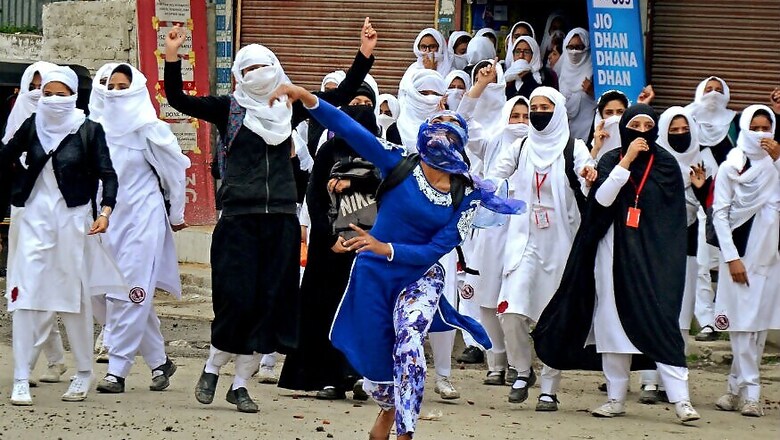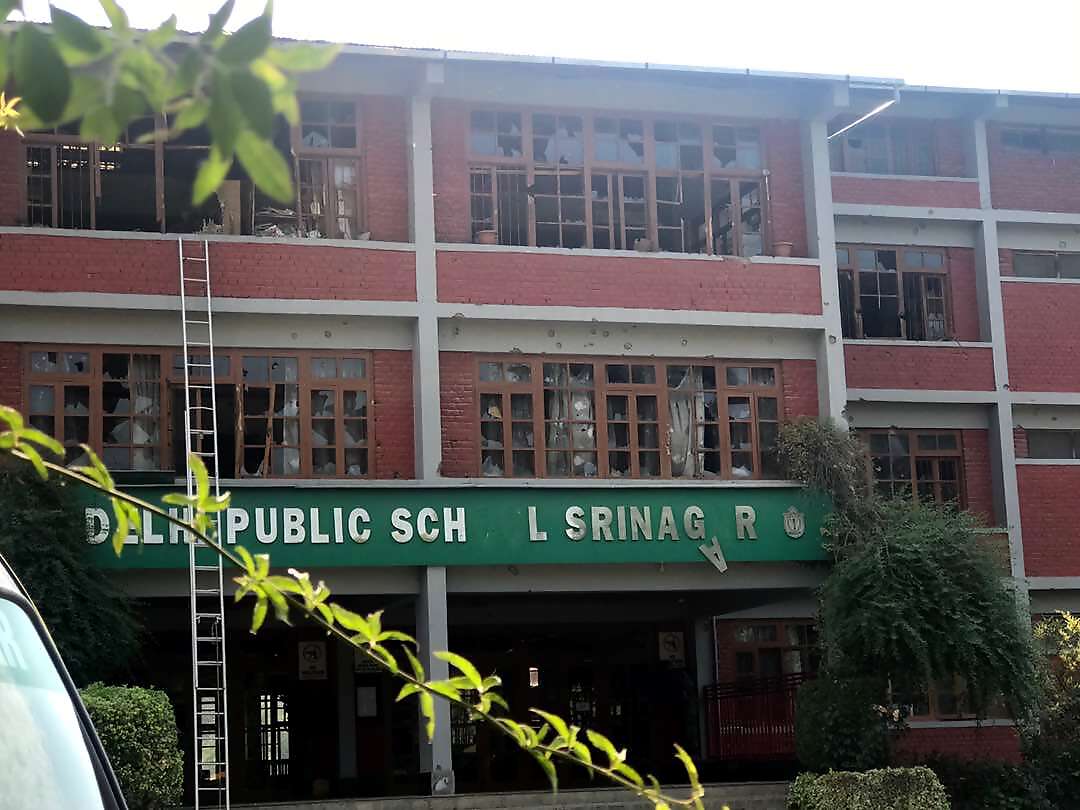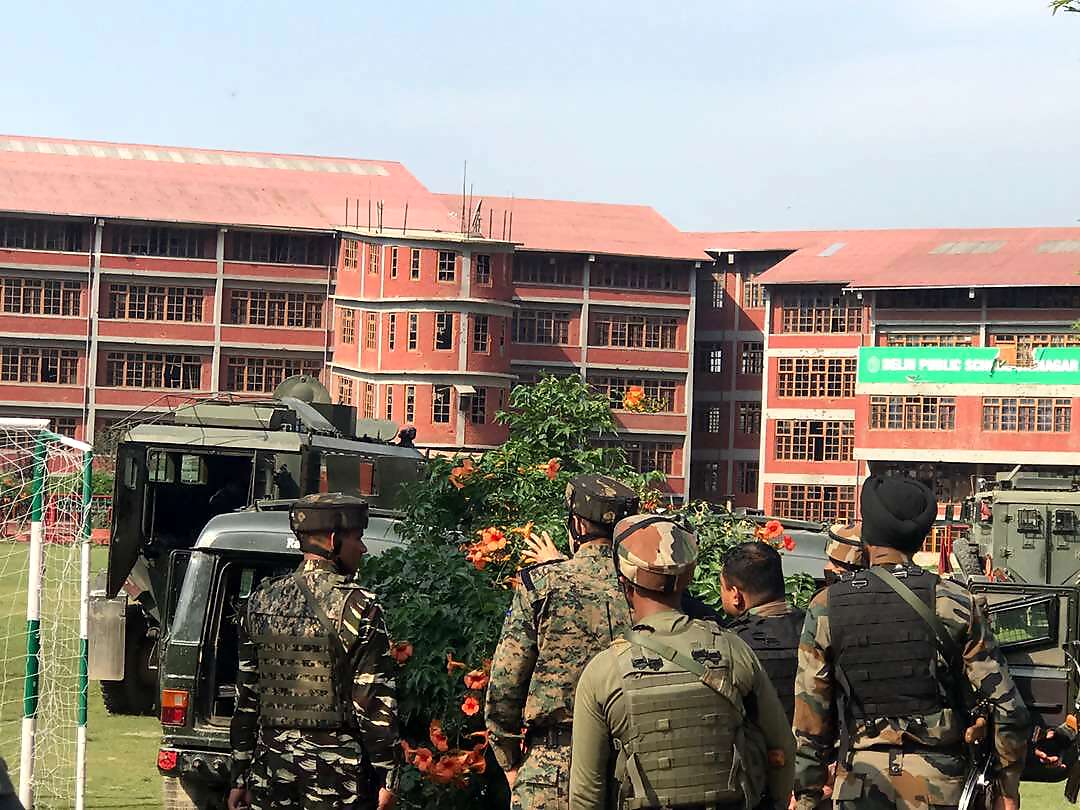
views
 One of the biggest schools of Jammu and Kashmir became a venue to a fierce 16-hour gun-battle between security forces and militants early on Sunday. The encounter inside DPS Srinagar ended when security forces eliminated two terrorists.
One of the biggest schools of Jammu and Kashmir became a venue to a fierce 16-hour gun-battle between security forces and militants early on Sunday. The encounter inside DPS Srinagar ended when security forces eliminated two terrorists.
In some time from now, security forces will finish a room-by-room search of the school and will announce the school safe. And a few days later its students, a lot of who presumably are right now curiously following the violence unfolding in their classrooms, will be asked to resume classes.
It will be tough, but DPS Srinagar’s students won’t be the only ones who would’ve felt violence unfold palpably close to them, who would’ve stayed away from each other and the school for long periods, and intermittently attended a few school classes.

Over the last one year, schools and colleges in the Valley have remained shut for six out of every 10 working days, leading to near-loss of entire academic year. Since July 8, 2016, educational institutions have stayed open on only 80 out of 197 working days, according to a report by IndiaSpend.
And during this period, starting from the death of Hizbul commander Burhan Wani, well over 150 people have died, about 20,000 have been injured and hundreds have lost their eye-sight.
“A couple of years ago, it was okay for me and my friends to come back from school in evening. Now, we are home by early afternoon, that is, if we go to school at all,” rues Bashir, a Class 10 student from Pulwama. People in Kashmir are no stranger to the vicious cycle of conflict and violence, and children, like Bashir, are the worst-hit.

Union Home Ministry’s data shows that in 2016 as many as 2,690 incidents of stone-pelting took place. And with every such incident, the state administration’s first response has been to shut down educational institutes as a precautionary measure.
Changing Face of Classrooms
Although schools and colleges have often been used as protest venues by students, it was for the first time that they’ve turned into active battlegrounds.
In April this year, local police barged into a degree college in Pulwama and fired tear-gas shells and pellets at protesting students inside. Over 60 students were injured, most of them girls. In retaliation, for the first time in the Valley, thousands of students across schools and colleges erupted in anger. For the first time, one saw images of young school girls flinging stones at security forces in Kashmir.
Classes were suspended for weeks as educationists kept urging students to go back to schools.
Once schools reopened, the discussions in classrooms went beyond topics of the solar system or equations of mathematics. Children were seen huddled, discussing turbulent environment around them, either with a sense of fear or rage, said Nayeema, a teacher based in Pulwama.
“What else do you expect? Students here can’t afford to be innocent. They are deeply political as they the worst-hit. There is no way they can concentrate on academics. The Valley is deep into conflict and the first thing that happens whenever the situation snowballs is a crackdown on schools and colleges,” said Nayeema.
A feeling of being discriminated, Nayeema said, rules the minds of students.
“Forces march inside school and college campuses at their will. Will a normal student be fine with that?” asked Mir, a budding writer and Class 12 student based in Baramulla. Mir recounts the day he was sitting on the window sill of his classroom, along with a friend, when a tear-gas shell was allegedly thrown into the school playground. “We were evacuated by teachers. Many students fell unconscious due to breathlessness,” she added.
“I have lost friends. It’s not like we have seen total peace, but earlier we at least has schools to divert our attention,” said Mir.
Learning Without Schools
Bashir and Mir are among students who are struggling not to lose their grasp on academics. As their schools remain shut most of the times, students are forming neighbourhood groups where those who can afford have hired tutors and those who can’t are helping each other.
“We all try and sit together to study. There are few seniors around my home. So, I take my books and see if they can help. Rest of it is self-study,” said Bashir. His parents said even on days when schools are open, they are scared of sending their son to school.
Nayeema said internet came as a boon for students in the Valley as those who missed school could catch up through online tutorials. But that too remains shut most of the times.
Uncertain Future
Educationists fear that if schools and colleges continue to remain shut, an army of uneducated and unemployable youths will be created, further pushing Kashmir into violence and protests. Angry and directionless youths might also make for easy target of terrorist groups.
“The youth in the Valley is staring at a bleak future. There are no two ways about it. Schools and colleges are shut for most of the times. There are bans on the internet. On top of it all, even if there were community study circles, parents are scared to let their children step out of the houses,” said Mushtaq Ul Haq Sikander, a writer and researcher.
Vijay Dhar, founder of Delhi Public School, Srinagar, highlighted how the school functioned in the face of constant curbs and shutdowns. “We kept our schools open on Sundays. We conducted pre-board exams in the indoor stadium. Results of the students have been stupendous. So, it’s clearly not like the students don’t want to study. If given a chance, they want to excel,” he said.
Additionally, the school had, during the period of curbs on internet, sent out video lessons on various gadgets to the homes of its students. While Dhar could pull it off successfully, scores of other students who had no access to such lessons at home suffered.
A Fight for Rights
Security forces in and around campuses has become a common sight in the Valley. So is the sight of boys and girls, in their school uniforms, attacking forces with stones. The idea of being looked at with suspicious eyes is a trigger in itself.
“What good will the forces and the administration get by shutting our schools, and then looking at us with suspicious eyes and doing physical search whenever they feel like?” asked Mir.
But, what about those who are found indulging in stone pelting incidents? “They have no option,” said Mir. “We are finding ways to channelise our anger and the environment around us making it worse,” he added.
Dhar said, “Many of them are angry at the sight of forces all around them. But there are also many more youngsters who are furious because they don’t know a thing about their future. Their education is suffering and there are no concrete jobs. Their mindset is that of looking after themselves, and not caring about anyone else.”
“The youths need to be educated. They need to be empowered. The way things are going, Kashmir will have a big percentage of semi-literate generation,” said Mushtaq.
(Names of Bashir, Mir, and Nayeema have been changed to protect their identity)

















Comments
0 comment